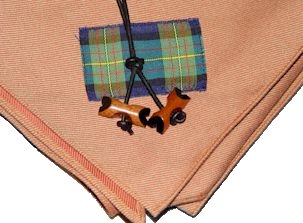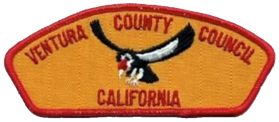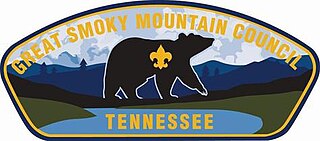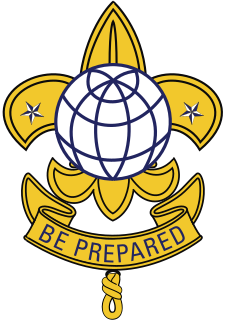
A Scout is a child, usually 10–18 years of age, participating in the worldwide Scouting movement. Because of the large age and development span, many Scouting associations have split this age group into a junior and a senior section. Scouts are organized into troops averaging 20–30 Scouts under the guidance of one or more Scout Leaders. Troops subdivide into patrols of about 6–8 Scouts and engage in outdoor and special interest activities. Troops may affiliate with local, national, and international organizations. Some national Scouting associations have special interest programs such as Air Scouts, Sea Scouts, outdoor high adventure, Scouting bands, and rider Scouts.

Scouting in Kentucky has a long history, from the 1910s to the present day, serving thousands of youth in programs that suit the environment in which they live. Kentucky has a very early Scouting heritage, as the home state of Daniel Carter Beard.

Scouting in New York has a long history, from the 1910s to the present day, serving thousands of youth in programs that suit the environment in which they live. The first National Boy Scouts of America (BSA) Headquarters was in New York City, and the Girl Scouts of the USA National Headquarters is currently located at 420 5th Avenue, New York, New York.

A neckerchief, sometimes called a necker, kerchief or scarf, is a type of neckwear associated with those working or living outdoors, including farm labourers, cowboys and sailors. It is most commonly still seen today in the Scouts, Girl Guides and other similar youth movements. A neckerchief consists of a triangular piece of cloth or a rectangular piece folded into a triangle. The long edge is rolled towards the point, leaving a portion unrolled. The neckerchief is then fastened around the neck with the ends either tied or clasped with a slide or woggle.

Wood Badge is a Scouting leadership programme and the related award for adult leaders in the programmes of Scout associations throughout the world. Wood Badge courses aim to make Scouters better leaders by teaching advanced leadership skills, and by creating a bond and commitment to the Scout movement. Courses generally have a combined classroom and practical outdoors-based phase followed by a Wood Badge ticket, also known as the project phase. By "working the ticket", participants put their newly gained experience into practice to attain ticket goals aiding the Scouting movement. The first Wood Badge training was organized by Francis "Skipper" Gidney and lectured at by Robert Baden-Powell and others at Gilwell Park in September 1919. Wood Badge training has since spread across the world with international variations.

Cub Scouting is part of the Scouting program of the Boy Scouts of America (BSA), available to boys and girls from kindergarten through fifth grade, or 5 to 10 years of age and their families. Its membership is the largest of the five main BSA divisions. Cub Scouting is part of the worldwide Scouting movement and aims to promote character development, citizenship training, personal fitness, and leadership.

A camporee is a local or regional gathering of Scouting units for a period of camping and common activities. Similar to a camporee, a jamboree occurs less often and draws units from the entire nation or world. It should not be confused with the Australian term jamborette.

The National Scout jamboree is a gathering, or jamboree, of thousands of members of the Boy Scouts of America, usually held every four years and organized by the National Council of the Boy Scouts of America. Referred to as "the Jamboree", "Jambo", or NSJ, Scouts from all over the nation and world have the opportunity to attend. They are considered to be one of several unique experiences that the Boy Scouts of America offers. The first jamboree was scheduled to be held in 1935 in Washington, D.C. to celebrate the 25th anniversary of Scouting, but was delayed two years after being cancelled due to a polio outbreak. The 1937 jamboree in Washington attracted 25,000 Scouts, who camped around the Washington Monument and Tidal Basin. The event was covered extensively by national media and attended by President Franklin D. Roosevelt.
The uniform and insignia of the Boy Scouts of America (BSA) gives a Scout visibility and creates a level of identity within both the unit and the community. The uniform is used to promote equality while showing individual achievement. While all uniforms are similar in basic design, they do vary in color and detail to identify the different membership divisions of Cub Scouting, Scouts BSA and Venturing. Many people collect BSA insignia such as camporee and jamboree emblems, council shoulder strips and historical badges.

Scouting in Maine dates back to the creation of the Katahdin Area Council in 1920 and has continued prominently to the present day.

A Scout leader or Scouter generally refers to the trained adult leader of a Scout unit. The terms used vary from country to country, over time, and with the type of unit.

Scouts BSA is the flagship membership level of the Boy Scouts of America (BSA) for boys and girls between the ages of 11 and 17. It provides youth training in character, citizenship, and mental and personal fitness. Scouts are expected to develop personal religious values, learn the principles of American heritage and government, and acquire skills to become successful adults.

The Boy Scouts of America (BSA) was inspired by and modeled on the Boy Scout Association, established by Baden-Powell in Britain in 1908. In the early 1900s, several youth organizations were active, and many became part of the BSA.

Max I. Silber was an American businessman from New Hampshire who through his philanthropic works became not only a formative figure for Boy Scouting in New Hampshire, but a distinguished citizen of his home state. A devout Jew, Silber was an active supporter of religious Scouting programs, and was distinguished not just by the Jewish Committee of Scouting, but by the Roman Catholic Committee on Scouting as well. Perhaps the most famous endeavor of Silber's was the development of his "friendship gifts" which were most commonly belt buckles made of bronze. These buckles have evolved into popular Scouting collectibles.

Ventura County Council of the Boy Scouts of America was officially chartered as Council 57 on June 23, 1921, after a series of meetings that followed a proposal put forward at a County Chamber of Commerce meeting on March 28, 1921, in the Masonic Hall. Mr. C. H. Whipple, then of Moorpark and later Oxnard, became the president; and Col. J.L. Howland became commissioner. Harvey R. Cheesman, an assistant scout executive in the Los Angeles Council, became the first Scout Executive, assuming his duties on July 11).

The Pushmataha Area Council is part of the Boy Scouts of America. It renders service to Scout units in ten counties of North Mississippi, providing skills training and character development to boys and girls between the ages of 5 and 18. The council also serves boys and girls between the ages of 14 and 21 through Venturing Crews and Explorer posts.

The Great Smoky Mountain Council is a local council of the Boy Scouts of America in Tennessee, with headquarters in Knoxville. It serves 21 East Tennessee counties that span two time zones. Camp Buck Toms is a summer camp owned and operated by the Great Smoky Mountain Council. The camp is located outside Rockwood, Tennessee, on the shores of Watts Bar Lake.

Mount Diablo Silverado Council is a local council of the Boy Scouts of America (BSA) and is one of six councils that serves the San Francisco Bay area in California. The council's office is located in Pleasant Hill, California. It serves chartered organizations and BSA units in Contra Costa County, Lake County, Napa County, Solano County, and the cities of Albany and Berkeley in northern Alameda County. The council is located in BSA Western Region Area III.

International Boy Scouts, Troop 1, Japan's first Boy Scout troop, was founded in 1911 with Clarence Griffin as Scoutmaster. Despite its early multinational character the troop's original registration was with the London headquarters of The Boy Scouts Association as "British Scouts in Foreign Countries". This initial charter was due to there being no international Boy Scout office and the "nationality requirement" that was in effect at the time. In 1918 the troop's character changed considerably when the new Scoutmaster, Bro. Joseph Janning, received approval from Lord Baden-Powell to officially reorganized the troop as a mixed-nationality, or "international", troop. B-P subsequently brought the Troop's situation before the 3rd World Scout Conference where the newly formed Boy Scouts International Bureau received approval to directly register Troop 1 and, in the future, other such "international" groups. The troop was then directly registered by the Boy Scouts International Bureau and was issued the Boy Scout movement's first "mixed nationality" charter, dated October 30, 1925, signed by Baden-Powell as Chief Scout and Hubert S. Martin as Director of the new International Bureau. Within a few years the nationality requirement was abolished and, even though the Bureau maintained the direct registration of Troop 1 and other groups already registered, new groups were requested to join the national organization of the country in which they were located and no new groups were chartered. Over the years the directly chartered groups one-by-one and for varied reasons slowly disbanded and by 1955 only Troop 1 remained. The troop has been continuously active, including war years, since its first meeting held in Yokohama, Japan on October 16, 1911 and currently consists of coed sections of Beaver Scouts, Cub Scouts, Scouts, Senior Scouts, and Veteran Scouts.




















